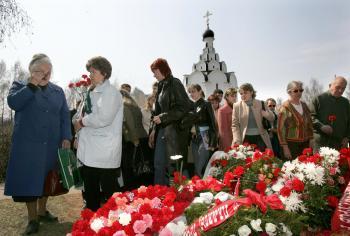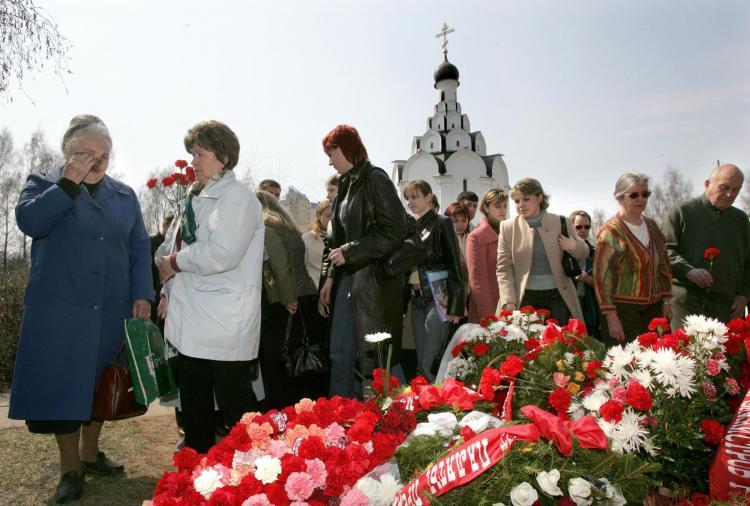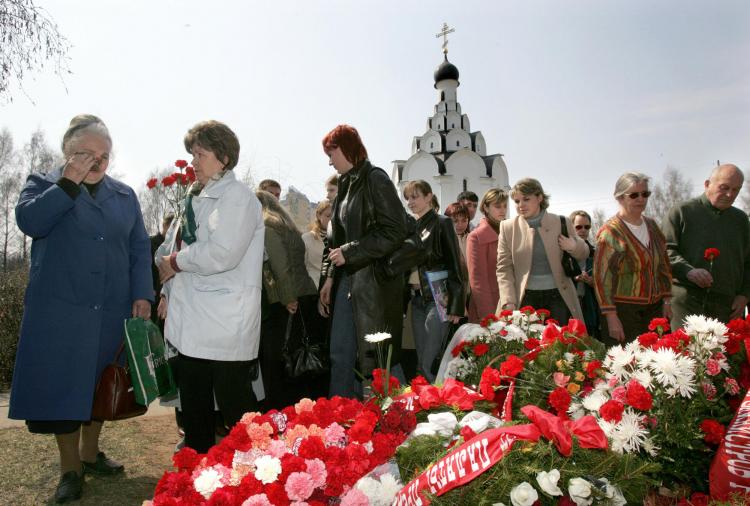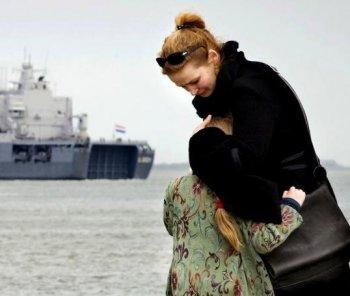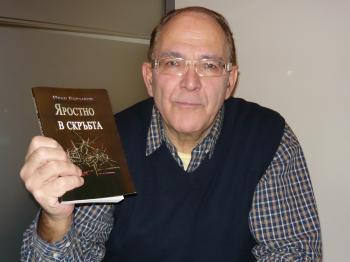Ukraine honored the memory of the fallen after the Chernobyl accident, which happened 23 years ago, on April 26, 1986. “Today we remember with great sadness those heroes who sacrificed for the sake of us and our children,” said Ukrainian President Viktor Yushchenko in a speech on the occasion, reported AFP.
Twenty-three years ago, at 1:23 a.m., an explosion took place in one of Chernobyl’s nuclear reactors. The radioactive pollution killed thousands of people in Ukraine, Russia, and Belarus. The explosion released large quantities of radioactive particles containing cesium 137 and strontium 90 into the atmosphere. Radiation levels exceeded 400 times those released in the explosion of the atomic bomb over Hiroshima.
The radioactive cloud spread over large areas of the former Soviet Union, Eastern, Central, and Northern Europe, and the eastern parts of North America. Weak radioactive rain even fell in Ireland.
The Soviet authorities did their utmost to stifle the case and even prohibited doctors from recording “radiation” as a cause of death for its victims. On the first day after the tragedy, the explosion remained a full international secret until the radioactive cloud spread over large parts of Europe.
On April 27, 1986, workers in Sweden in the nuclear plant Forsmark—about 680 miles from Chernobyl—were found to have radioactive particles on their clothes. Swedish authorities began investigating the case and established that there was no leakage or emissions from their reactor. Then it became clear that there was a serious problem in the western part of the Soviet Union. At that time, Finland had reported an increase in the level of radiation in the atmosphere.
Soviet authorities and the leaders of most countries in Eastern Europe continued to hide the truth from the public until the situation became out of control.
Media in the communist bloc mentioned almost nothing about the catastrophic accident, and what they mentioned was very brief and vague. The only source of information became foreign radio broadcasts, which were banned at that time.
According to scientific research, Belarus has absorbed 60 percent of the pollution. The radioactive cloud reached Bulgaria on May 1, coinciding with the celebration of Labor Day, with thousands of people out in the open.
Twenty-five thousand Ukrainians, known as “liquidators,” died in the early days while trying to keep the situation under control, trying to construct a concrete slab over the remains of the reactor.
In Ukraine alone, 2.3 million people are officially registered as victims of the tragedy. Immediately after the incident over 4,000 Ukrainians—children and adults—were operated on for cancer of the thyroid gland, the most common consequence of radiation exposure.
The nuclear plant was finally closed in 2000. Until then one of the reactors continued to produce electricity.
The facility continues to be dangerous, as the concrete cover, which was laid over 200 tons of radioactive fuel, has started to crack. To prevent further problems, a steel sarcophagus is planned to be built, which will cover the concrete.
Twenty-three years ago, at 1:23 a.m., an explosion took place in one of Chernobyl’s nuclear reactors. The radioactive pollution killed thousands of people in Ukraine, Russia, and Belarus. The explosion released large quantities of radioactive particles containing cesium 137 and strontium 90 into the atmosphere. Radiation levels exceeded 400 times those released in the explosion of the atomic bomb over Hiroshima.
The radioactive cloud spread over large areas of the former Soviet Union, Eastern, Central, and Northern Europe, and the eastern parts of North America. Weak radioactive rain even fell in Ireland.
The Soviet authorities did their utmost to stifle the case and even prohibited doctors from recording “radiation” as a cause of death for its victims. On the first day after the tragedy, the explosion remained a full international secret until the radioactive cloud spread over large parts of Europe.
On April 27, 1986, workers in Sweden in the nuclear plant Forsmark—about 680 miles from Chernobyl—were found to have radioactive particles on their clothes. Swedish authorities began investigating the case and established that there was no leakage or emissions from their reactor. Then it became clear that there was a serious problem in the western part of the Soviet Union. At that time, Finland had reported an increase in the level of radiation in the atmosphere.
Soviet authorities and the leaders of most countries in Eastern Europe continued to hide the truth from the public until the situation became out of control.
Media in the communist bloc mentioned almost nothing about the catastrophic accident, and what they mentioned was very brief and vague. The only source of information became foreign radio broadcasts, which were banned at that time.
According to scientific research, Belarus has absorbed 60 percent of the pollution. The radioactive cloud reached Bulgaria on May 1, coinciding with the celebration of Labor Day, with thousands of people out in the open.
Twenty-five thousand Ukrainians, known as “liquidators,” died in the early days while trying to keep the situation under control, trying to construct a concrete slab over the remains of the reactor.
In Ukraine alone, 2.3 million people are officially registered as victims of the tragedy. Immediately after the incident over 4,000 Ukrainians—children and adults—were operated on for cancer of the thyroid gland, the most common consequence of radiation exposure.
The nuclear plant was finally closed in 2000. Until then one of the reactors continued to produce electricity.
The facility continues to be dangerous, as the concrete cover, which was laid over 200 tons of radioactive fuel, has started to crack. To prevent further problems, a steel sarcophagus is planned to be built, which will cover the concrete.
